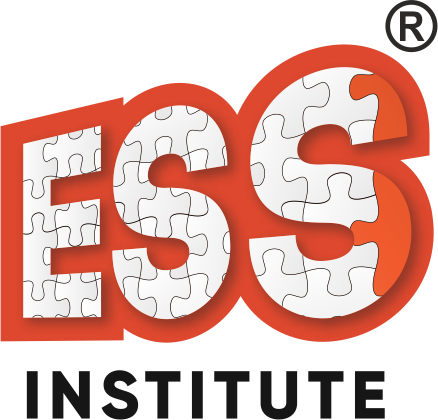Engaging with a company’s affiliate marketing strategy is more common than one might think. If you’ve ever clicked on a product link from a review website or benefited from a discount code featured in a podcast, you’ve directly participated in affiliate marketing. Partnerships between businesses and content creators—such as influencers, podcasters, and product review websites—are the focus of this marketing strategy. You will discover several types of affiliate marketing in this post curated after extensive discussion with the affiliate marketing experts from best Digital Makreting course at ESS Digital Marketing institute in Delhi, along with the various approaches businesses take to connect with their target market. Read on to learn more.
What is Affiliate Marketing?
Affiliate marketing is a type of digital marketing where affiliates promote products and services on behalf of a company, known as the merchant, through special links and earn a commission. The affiliate receives a commission based on the number of customers they attract and the amount those customers spend.
For example, imagine you’re an affiliate marketer for an online store selling t-shirts. You create content on your website encouraging visitors to click through to the store and make purchases. Every time someone clicks your link and buys a t-shirt, you earn a percentage of the t-shirt price as commission. It’s a mutually beneficial arrangement where both the affiliate and the merchant profit from each sale generated through the affiliate’s promotional efforts.Let us learn about types of affiliate marketing
Types of Affiliate Marketing
There are three types of affiliate marketing:
Unattached Affiliate Marketing
Unattached Affiliate Marketing is a distinctive approach where affiliates promote products unrelated to their own business, website, or blog. In this model, affiliates lack expertise and cannot position themselves as authorities endorsing or advising on the promoted products. The promotion is typically done through paid advertising channels such as Google Adwords or Facebook Ads, with earnings based on a pay-per-click model.
While this strategy can be challenging due to the extensive research required to align products with the audience’s interests, it holds the potential for substantial payouts when executed effectively. Building trust with the audience is crucial, and it takes time to establish a relationship that encourages product purchases.
Pros:
- No need for a specific presence or authority to promote a product.
- Affiliates are not actively involved in promoting the product.
- Significant potential returns once trust is established.
Cons:
- Time-consuming to build trust with prospects.
- Limited ability to customise the approach.
- Lack of authority to advise or recommend products.
- Inability to build relationships with the end user
- Making sales a considerable gamble.
Example of Unattached Affiliate Marketing:
For instance, if you run a website offering web design services, you could become an unattached affiliate of a hosting company and promote their web hosting services. You would display banners or links on your website to direct potential customers to the hosting company, without needing specific knowledge about hosting services.
Related Affiliated Marketing
Related Affiliate Marketing involves promoting products directly tied to your business or website. As an affiliate, your online presence, be it a blog, website, or social media platform, centres around a niche closely linked to the products you endorse. What sets this apart is the personal connection you have with the products, whether they are your own creations or those associated with a company you’ve collaborated with previously, even if you’re not a direct user of the products.
This type of affiliate marketing streamlines your efforts because you already possess an established audience familiar with your business. Their trust in your recommendations simplifies the process, making it easy for them to make purchases through your affiliate links.
Pros of Related Affiliate Marketing:
- Ease of selling, as your audience already trusts your recommendations.
- Your authority and expertise enhance the credibility of your product endorsements.
- Involves more collaboration between you as the affiliate and the merchant.
Cons:
- Requires upfront effort to establish trust.
- Opportunities for high payouts may be limited, as your audience might already be familiar with the products.
- There’s a risk of losing trust if you promote the wrong product.
Example of Related Affiliate Marketing:
Suppose you operate a blog centred around gardening. Becoming a related affiliate for a gardening supply store aligns perfectly. By promoting their products on your blog through banners or links, you offer your readers products directly related to your content. This strategic alignment encourages your audience to make purchases through your affiliate links, leveraging the trust and relevance you’ve built in your gardening-focused community.
Involved Affiliate Marketing
In Involved Affiliate Marketing, the relationship between the affiliate and the promoted products goes beyond a mere endorsement. As the affiliate, your connection with the product is personal—you’ve either used it in the past or currently incorporate it into your life. This lets you confidently recommend it to your audience. Rather than presenting the product in a detached banner ad, you seamlessly integrate recommendations into your content. This marketing method is to position yourself as an expert and trusted informant.
In Involved Affiliate Marketing, you actively participate in promotional activities such as webinars, conferences, and speaking engagements. It contributes to a deeper awareness of the product. Your engagement is not just about selling; it’s about sharing your firsthand experience and knowledge with your audience.
Pros:
- Affiliates engage directly with customers, fostering a more active promotion.
- Working with an audience that already trusts you enhances credibility.
- Promotion of products you’ve tested and genuinely believe in.
- Honest and helpful recommendations lead to higher chances of making sales.
Cons:
- Affiliates need an intimate knowledge of the product.
- Any issues with the product may affect the affiliate’s reputation.
- Requires more upfront work, with affiliates actively seeking opportunities to engage customers.
Examples of Involved Affiliate Marketing:
For instance, if your blog revolves around photography, you might create tutorials showcasing the use of cameras and photography equipment from a preferred brand, such as Canon. Rather than promoting various camera brands generically, you share tutorials on your blog with affiliate links leading back to Canon’s official website. This approach allows viewers to explore Canon products further and make purchases, earning you a commission.
How to Start Affiliate Marketing?
Here’s how to kickstart your affiliate marketing venture in seven simple steps:
- Choose your niche and type: The first crucial step in affiliate marketing is selecting a niche you are passionate about. This niche is essentially the industry or line of products you intend to promote. It’s essential to pick something you have sufficient knowledge about. Additionally, decide your choice from the types of affiliate marketing you want to pursue – whether it’s unattached, related, or involved affiliate marketing.
- Define your target audience: Once your niche is identified, define your target audience. Consider factors such as age, gender, geographical location, economic status, and profession. Understand their likes, dislikes, interests, and preferences, as this information is crucial for effectively promoting products to them. Utilise social media platforms to gain insights into your audience, given that 74% of buyers rely on social media to influence their purchase decisions.
- Choose the right products to promote: With a clear understanding of your target audience, identify products and services that align with their needs and preferences. Prioritise quality products from reputable companies, ensuring they offer reasonable commissions that can lead to higher conversions. The products you choose should resonate with your audience and provide value to meet their deepest needs.
- Find the right affiliate program: Research potential partners offering products or services related to your niche. Explore various affiliate platforms or networks, such as Amazon Associates or ShareASale. Consider factors like commission rates, terms & conditions, reviews, payment methods, and affiliate support services before making a decision. Upon choosing a program, register as an affiliate and create your account, obtaining your affiliate links.
- Set SMART goals: Before diving into marketing, set clear and realistic goals to guide your efforts. Ensure your goals are SMART – Specific, Measurable, Achievable, Relevant, and Time-bound. This strategic approach will keep you focused and maximise the effectiveness of your marketing efforts.
- Promote products/services effectively: Initiate your marketing efforts by creating content around the products or services you’re promoting. Utilise various channels such as website/blog articles, social media posts, YouTube videos, podcasts, email campaigns, and paid advertisements to reach your audience. The goal is to provide valuable information to make informed decisions.
- Track progress and optimise strategies: As you start promoting products, track the effectiveness of your strategies. Measure metrics like click rates, the number of sales, and website visitors using tools like Google Analytics. This tracking process enables you to identify what works well and what needs optimization, allowing you to refine your approach and maximise your affiliate marketing success.
Conclusion
The key to success in affiliate marketing lies in understanding and selecting the right type for your strategy. Unattached affiliate marketing involves promoting products unrelated to your brand, while related affiliate marketing, or influencer marketing, requires building trust and a connection with the brand. Involved affiliating demands cultivating meaningful, long-term relationships with your audience. When deciding, assess your commitment level and what serves your consumers best. While affiliate marketing takes time to engage and build trust, it often proves the most profitable. Begin your affiliate journey by joining a reputable program and partnering with established brands.

